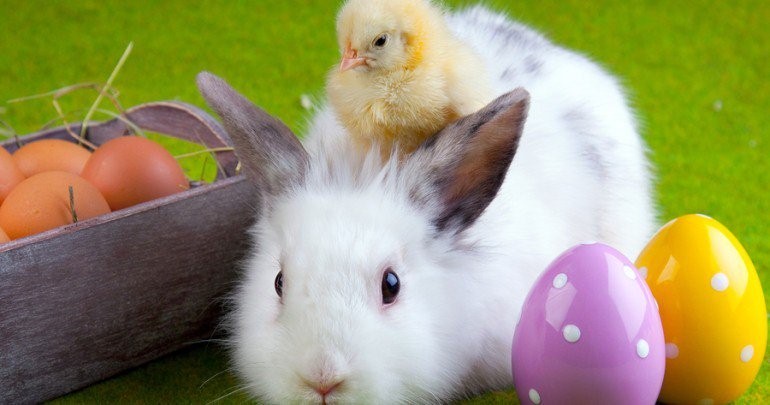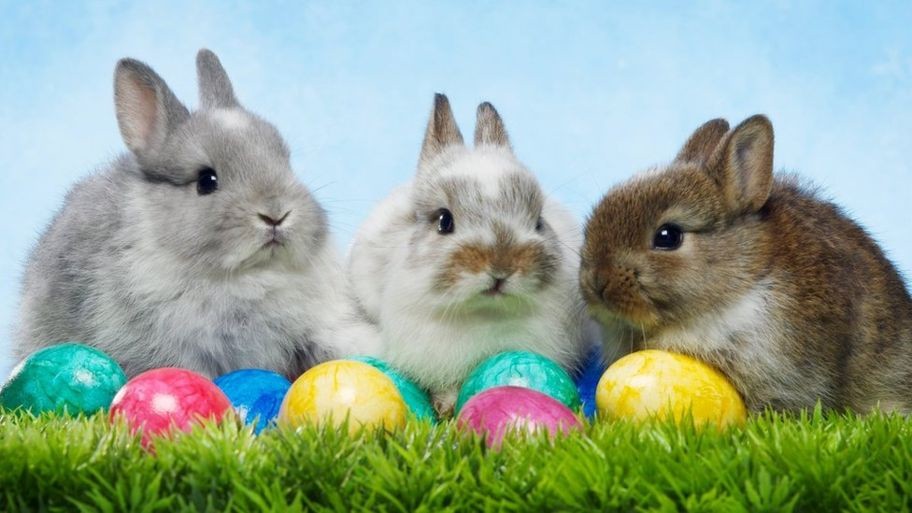NOVEDADES
18-04-2019
 Why do we have Easter eggs?A lot of us may chomp on chocolate eggs at Easter, but originally eating eggs was not allowed by church leaders during the week leading up to Easter (known as Holy Week). So any eggs laid that week were saved and decorated to make them Holy Week eggs, that were then given to children as gifts. Russians in the 19th century reportedly gifted bedazzled eggs to each other on Easter.Victorians adapted the tradition with satin-covered cardboard eggs filled with Easter gifts.Others believe it was the immigration of Germans to America in the 1700s that brought the egg-laying rabbit tradition overseas. Historically, German immigrant children prepared nests the night before the holiday for the bunny to place its colorful eggs, as long as the youth were good that year. Much like American well-behaved children leave a plate of cookies out for Santa Claus and carrots for his reindeer, 18th-century German kids keep a plate of carrots out for the Easter Bunny-in case he needs to refuel after all that bouncing.Why are Easter eggs made of chocolate?
Why do we have Easter eggs?A lot of us may chomp on chocolate eggs at Easter, but originally eating eggs was not allowed by church leaders during the week leading up to Easter (known as Holy Week). So any eggs laid that week were saved and decorated to make them Holy Week eggs, that were then given to children as gifts. Russians in the 19th century reportedly gifted bedazzled eggs to each other on Easter.Victorians adapted the tradition with satin-covered cardboard eggs filled with Easter gifts.Others believe it was the immigration of Germans to America in the 1700s that brought the egg-laying rabbit tradition overseas. Historically, German immigrant children prepared nests the night before the holiday for the bunny to place its colorful eggs, as long as the youth were good that year. Much like American well-behaved children leave a plate of cookies out for Santa Claus and carrots for his reindeer, 18th-century German kids keep a plate of carrots out for the Easter Bunny-in case he needs to refuel after all that bouncing.Why are Easter eggs made of chocolate? The first chocolate eggs appeared in France and Germany in the 19th Century, but they were bitter and hard.As chocolate-making techniques improved, hollow eggs like the ones we have today were developed.They very quickly became popular and remain a favourite tradition with chocolate-lovers today.What's the Easter Bunny then?
The first chocolate eggs appeared in France and Germany in the 19th Century, but they were bitter and hard.As chocolate-making techniques improved, hollow eggs like the ones we have today were developed.They very quickly became popular and remain a favourite tradition with chocolate-lovers today.What's the Easter Bunny then? The story of the Easter Bunny is thought to have become common in the 19th Century. Legends date the tale of the Easter Bunny back to its origins as a European pagan tradition that celebrated the goddess of spring, Eostre (also written Eastre and conveniently pronounced like the Easter holiday). Worshippers held a festival in honour of the goddess around the spring equinox, which meant the party date shifted slightly each year, similar to the Easter of today.Eostre's ancient symbol was chosen as a rabbit presumably because the animal usually gives birth in the springtime when the weather is warm. Rabbits usually give birth to a big litter of babies (called kittens), so they became a symbol of new life and fertility.Legend has it that the Easter Bunny lays, decorates and hides eggs as they are also a symbol of new life.This is why some children might enjoy Easter egg hunts as part of the festival.It doesn't do all the work alone though!Not all countries have the Easter Bunny. Switzerland has a cuckoo bird, Australia has the rabbit-like bilby, and parts of Germany celebrate with a fox. But in the United States, they have a floppy-eared hippity-hop bunny rabbit that brings painted eggs in Easter baskets. From eggs hatch yellow chicks... or ducks... or geese, and so evolved the practice of giving feathered babies in the Easter season.
The story of the Easter Bunny is thought to have become common in the 19th Century. Legends date the tale of the Easter Bunny back to its origins as a European pagan tradition that celebrated the goddess of spring, Eostre (also written Eastre and conveniently pronounced like the Easter holiday). Worshippers held a festival in honour of the goddess around the spring equinox, which meant the party date shifted slightly each year, similar to the Easter of today.Eostre's ancient symbol was chosen as a rabbit presumably because the animal usually gives birth in the springtime when the weather is warm. Rabbits usually give birth to a big litter of babies (called kittens), so they became a symbol of new life and fertility.Legend has it that the Easter Bunny lays, decorates and hides eggs as they are also a symbol of new life.This is why some children might enjoy Easter egg hunts as part of the festival.It doesn't do all the work alone though!Not all countries have the Easter Bunny. Switzerland has a cuckoo bird, Australia has the rabbit-like bilby, and parts of Germany celebrate with a fox. But in the United States, they have a floppy-eared hippity-hop bunny rabbit that brings painted eggs in Easter baskets. From eggs hatch yellow chicks... or ducks... or geese, and so evolved the practice of giving feathered babies in the Easter season.